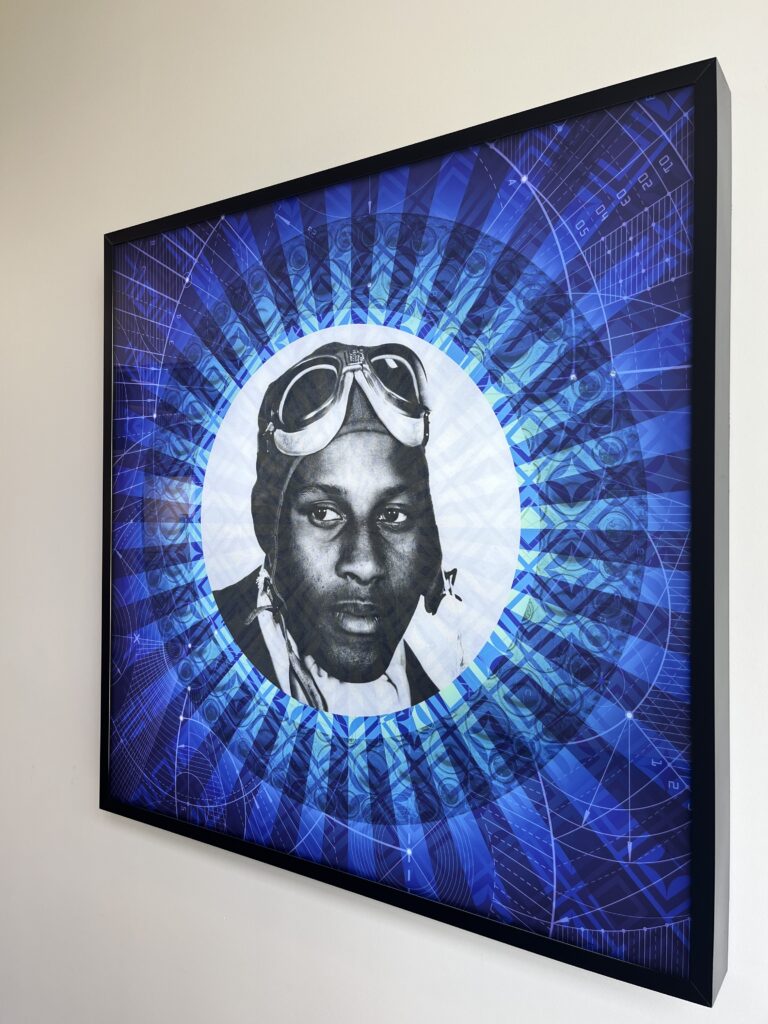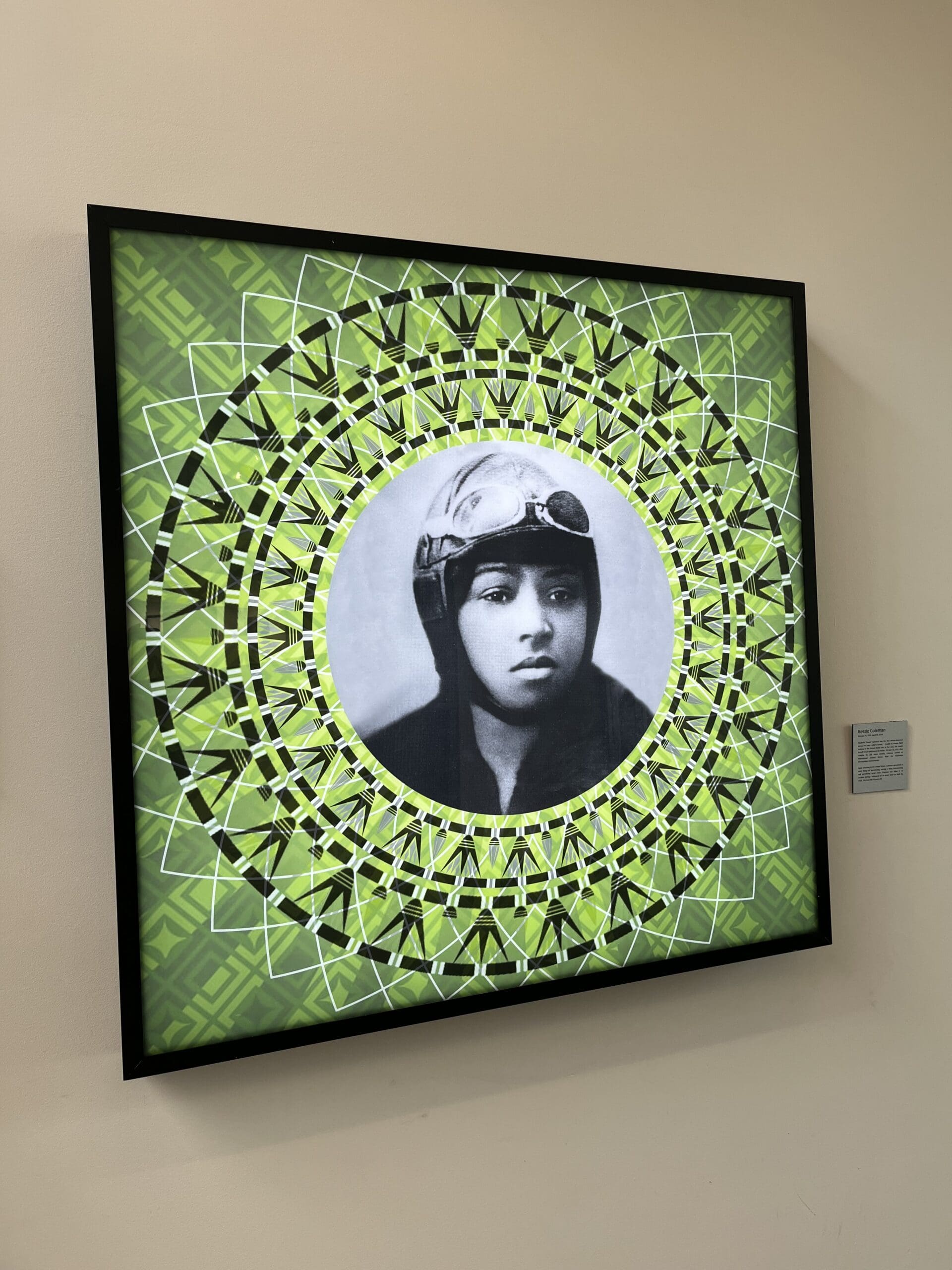Bessie Coleman (January 26, 1893 – April 30, 1926) Elizabeth “Bessie” Coleman was the first African American woman to earn a pilot’s license.
TNCPNEWS Photo
By Rina Risper, The New Citizens Press
ATLANTA, GA – Honor Black History Month by celebrating the contributions and achievements of African Americans throughout history. One way to do this is by participating in events and activities that highlight the history and culture of the African diaspora, such as concerts, exhibitions, lectures, and workshops, even when you travel.
Another way to honor Black History Month is by learning about and recognizing the global contributions of the African diaspora’s leaders, activists, and innovators. This can be done by reading books, watching documentaries, and attending events focusing on their accomplishments. It is also important to support Black-owned businesses, organizations, and institutions that promote the arts, culture, and history of the African diaspora. This can be done by purchasing products or services from these organizations, attending their events, and volunteering or donating to their causes.
Finally, it is important to continue the conversation about racial equality and social justice and to take action to support initiatives and organizations that work towards creating a more equitable and just society. Speaking up when you hear bigoted comments or see racist actions will go a long way toward preserving the mental, physical, and sociological health of marginalized communities and helping create a more inclusive society.
It is also important to educate oneself and others on issues related to racial equality and social justice. This includes learning about the history of systemic racism and its impact on communities of color, as well as understanding current issues and initiatives aimed at promoting racial justice and equality.
Another way to take action is by advocating for policies and initiatives that support racial equality and social justice. This can include contacting your elected representatives, participating in protests and demonstrations, and supporting organizations and movements working towards these goals.
It is also important to engage in self-reflection and examine one’s own biases and prejudices. This can help to promote a deeper understanding of the experiences and perspectives of others and can lead to personal growth and a greater commitment to promoting racial equality and social justice.
By continuing the conversation about racial equality and taking action to support initiatives that promote social justice, we can work towards creating a more equitable and just society for all people.
By honoring Black History Month, we can also help to preserve the history and culture of the African diaspora and promote a greater understanding and appreciation for the contributions they have made to society.
A Place to Visit in Atlanta, Georgia
The Aviation Community Cultural Center (ACCC) is a 16,200 square-foot facility located on the grounds of Fulton County “Charlie Brown” Airport along Fulton Industrial Boulevard at 3900 Aviation Circle, NW, Atlanta, Georgia 30336. In 2014, Michael Reese created “A Force Proportional to Their Masses,” with digital photography and LED light boxes at the ACCC.
The ACCC offers a variety of programs and events that cater to the interests and needs of the local community. The center offers arts and cultural activities, such as dance classes, theater performances, music lessons, and visual arts classes. It also serves as a resource center for the aviation community, providing information and resources related to aviation, including aviation history and careers. In addition to its cultural and educational offerings, the ACCC also serves as a venue for community events, such as weddings, corporate events, and private parties. The center features a large auditorium, several classrooms and studios, and a state-of-the-art audio-visual system, making it an ideal location for many events.
The mission of the ACCC is to provide a safe, welcoming, and supportive environment for people of all ages to participate in and enjoy the arts. The center is committed to making the arts accessible to everyone in the community, regardless of their background or financial situation. It provides scholarships and financial assistance to those in need.
Reese writes: “My inspiration to create the work “A Force Proportional to Their Masses” begins with the understanding the Wright brothers’ maiden flight which took place in 1903 and changed the world. It inspired countless would-be aviators around the globe to pursue the otherworldly act of flying. From the beginning, there were African Americans who not only dreamed of flying but achieved the seemingly impossible by piloting early aircraft. The concept of defying gravity is the literal and figurative symbol of the difficulties and societal pressures that the early aviators, especially those of color, had to overcome to achieve flight.”
Reese received his Bachelor of Fine Art in Photography from the Atlanta College of Art in 1996. His work has been exhibited in several group and solo exhibitions in venues such as Southwest Arts Center; International Center for photography in NY; Dalton Gallery, Agnes Scott College; and the Arts Festival of Atlanta. He has completed a number of public art commissions, including works for Flux Projects, Le Flash, MARTA, and New Genre Landscape in Grand Park. His artworks are in the permanent collections of Clark Atlanta University, Dekalb College, Hartsfield Jackson International Airport, and the city of Atlanta Office of Cultural Affairs.
Bessie Coleman (January 26, 1893 – April 30, 1926)
Elizabeth “Bessie” Coleman was the first African American woman to earn a pilot’s license. Unable to receive flight training in the United States due to her race, taught herself French and moved to France. On June 15th, 1921, after studying for just seven months, Coleman earned an international evaluation license from the Federation Aeronautique Internationale. Upon returning to the United States, Coleman specialized in stunt flying and parachuting, earning a living brainstorming and performing aerial tricks. Coleman was killed in an accident during a rehearsal for an aerial show on April 30th, 1926. She was only 33 years old.
Charles B. Hall (August 25, 1920 – November 22, 1971)
Major Charles B. Hall of the famed Tuskegee Airmen became the first black fighter pilot to down an enemy aircraft on July 21st, 1943. While escorting B-25 bombers over Italy on his eighth mission, Hall spotted two German aircraft approaching after the bombers had dropped their bombs on an enemy-held airfield. He quickly maneuvered into the space between the bombers and fighters and turned inside the two aircraft. Hall earned the respect of his squadron mates with his boldness and flying skill. Before he ended his combat tour, flying P-40s, Hall downed a total of three enemy aircraft. He received the Distinguished Flying Cross for being the first black to shoot down a German aircraft.
Howard Adolphus Wooten (April 20, 1920 – August 20, 1948)
Howard A. Wooten grew up on a farm near Lovelady, Texas, and in 1937, at age 17, he entered Prairie View College on a football scholarship. His main interest, however, was in aviation, and he attempted to enroll in flight training programs. Wooten dropped out of Prairie View College in 1940 and enlisted in the U.S. Army as a private assigned to a field artillery unit. He rose through the ranks, becoming a Staff Sergeant in the 46th field artillery Brigade by January 1942. In January 1945, he was reassigned to the 47th Bombardment Group, where he was one of a select group of Tuskegee pilots who would train to fly North American B–25 Mitchell Bombers.
Joseph N. Peterson (November 13, 1949 – January 18, 1982)
Captain “Pete” Peterson was commissioned as a second Lieutenant after completing the Air Force ROTC program, earning his wings at Williams Air Force Base, where he later served as an instructor pilot and became chief of Training. Peterson was a distinguished graduate of the Squadrons Officer Training School. He was later transferred to the Republic of Korea, where he was an F-4E flight Commander as an air-to-air instructor pilot with over 3300 hours in Jet Aircraft. Peterson was also a pilot for the air demonstration squadron of the USA Force (USAF), The Thunderbirds. The Thunderbirds tour the United States and much of the world, performing aerobatic formation and flying in specially marked USAF jet aircraft.
James Herman Banning (November 5, 1900 – February 5, 1933)
 In 1932, accompanied by Thomas C. Allen, James Banning became America’s black aviator to fly coast to coast. The “Flying Hoboes,” as they were officially known, made the 3300 mile trip from Los Angeles, CA to Long Island, NY, in 41 hours and 27 minutes aloft though the trip actually took 21 days to complete, as the pilots had to raise money for the next leg of the trip each time they stopped. Banning operated the J.H. Banning Auto Repair Shop in Ames, Iowa from 1922-1928 until moved to Los Angeles in 1929 and became the chief pilot for the Bessie Coleman Aero Club. There he became a demonstration pilot flying a biplane named “Miss Ames” for his days in the Midwest.
In 1932, accompanied by Thomas C. Allen, James Banning became America’s black aviator to fly coast to coast. The “Flying Hoboes,” as they were officially known, made the 3300 mile trip from Los Angeles, CA to Long Island, NY, in 41 hours and 27 minutes aloft though the trip actually took 21 days to complete, as the pilots had to raise money for the next leg of the trip each time they stopped. Banning operated the J.H. Banning Auto Repair Shop in Ames, Iowa from 1922-1928 until moved to Los Angeles in 1929 and became the chief pilot for the Bessie Coleman Aero Club. There he became a demonstration pilot flying a biplane named “Miss Ames” for his days in the Midwest.
Willa Beatrice Brown (January 22, 1906 – July 18, 1992)
Willa Brown received a degree in education from Indiana State University college in 1927 and an MBA from Northwestern University in 1937. Studying under Cornelius R. Coffey, a certified flight instructor and expert aviation mechanic at one of Chicago’s racially segregated airports, Brown earned her private pilot License in 1938. Brown and Coffey married and established the Coffey School of Aeronautics at Harlem Airport in Chicago, where they trained black pilots and aviation mechanics. Together with Cornelius Coffey and Enoch P. Waters, Willa Brown helped form the National Airmen’s Association of America in 1939, whose main goal was to get black aviation cadets into the United States Military.
Charles Frank Bolden Jr. (Born August 19, 1946)
Charles Bolden Jr. is a former Administrator of NASA, a retired United States Marine Corps Major General, and former NASA astronaut. A 1968 graduate of the United States Naval Academy, he became a Marine Aviator and test pilot. After his service as an astronaut, he became Deputy Commandant of Midshipmen at the Naval Academy. Selected by NASA in May 1980, Bolden became an astronaut in August 1981. A veteran of four space flights, he has logged over 680 hours in space. Bolden served as a pilot on STS-61-C (January 12-18, 1986) and STS-31 (April 24-29, 1990), and was the mission commander on STS-45 (March 24, 1992- April 2, 1992), and STS-60 ( February 3-11, 1994.) These are just a few examples of the many incredible African Americans who have made significant contributions to the field of aviation and aerospace. Their bravery, determination, and ingenuity have inspired generations and will continue to inspire future generations. The ACCC is a vital part of the community, providing a space for people to come together, learn, and create. When you are in the Atlanta, Georgia area, ACCC is the place for you and your family to visit and view the rest of the exhibit and other artwork in the facility. For more information or directions, log on to www.fultonarts.org.




